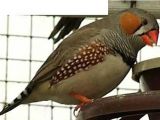We could say that nightingale's trills are connected to stuttering.
A team at the Methodist Neurological Institute (NI) in Houston and Weill Cornell Medical College in New York City which employed functional MRI has reached such a conclusion.
The researchers looked for the first time within the brain of an awake zebra finch, a songbird long studied for vocal learning, finding a pronounced right-brain response to the sound of songs, a model that could explain speech disorders like stuttering (which affects 1 % of the Americans), due to the many similarities between birdsong and human speech.
The team used specifically-tailored blood oxygenation level-dependent high-resolution fMRI in awake, mildly sedated zebra finches to see the activity in the entire bird brain during song stimulation.
"While we found that both sides of the brain were activated by sounds in the songbirds, our research showed that the right side of their brains discriminated sounds better," said lead author Dr. Santosh A. Helekar, associate research professor of neuroscience at the Methodist NI and Weill Cornell, involved also in researches about stuttering and other speech disorders.
"If we can link what we find in birds to what we already know about human brains, then we could better understand the causes of speech disorders and, in the long-run, be able to provide treatments to patients."
The brain reaction was investigated in 16 adult zebra finches to the playback of the birds' own song, their tutor's song, an unfamiliar zebra finch's song, and a synthetic sound of a single frequency.
The birds' own song induced a stronger activation in the auditory brain nuclei. Vocal sounds activated more the right side of the brain in these songbirds.
"We don't know exactly what goes wrong with the human brain when a patient stutters or has a particular speech problem.
But, if we can understand the neurobiology of the brain of this animal model and how sounds are processed by birds that produce normal and variant songs, then we may be able to translate these findings into treatments for patients with disorders such as stuttering and verbal dyspraxia," said first author Dr. Henning U. Voss, assistant professor of physics in radiology at Citigroup Biomedical Imaging Center of Weill Cornell.
The vocal learning process in the zebra finch gives researchers a model of the neural and behavioral mechanisms to how humans learn to emit sounds as songbirds have specialized brain nuclei devoted to communication, like humans do.

 14 DAY TRIAL //
14 DAY TRIAL // 
